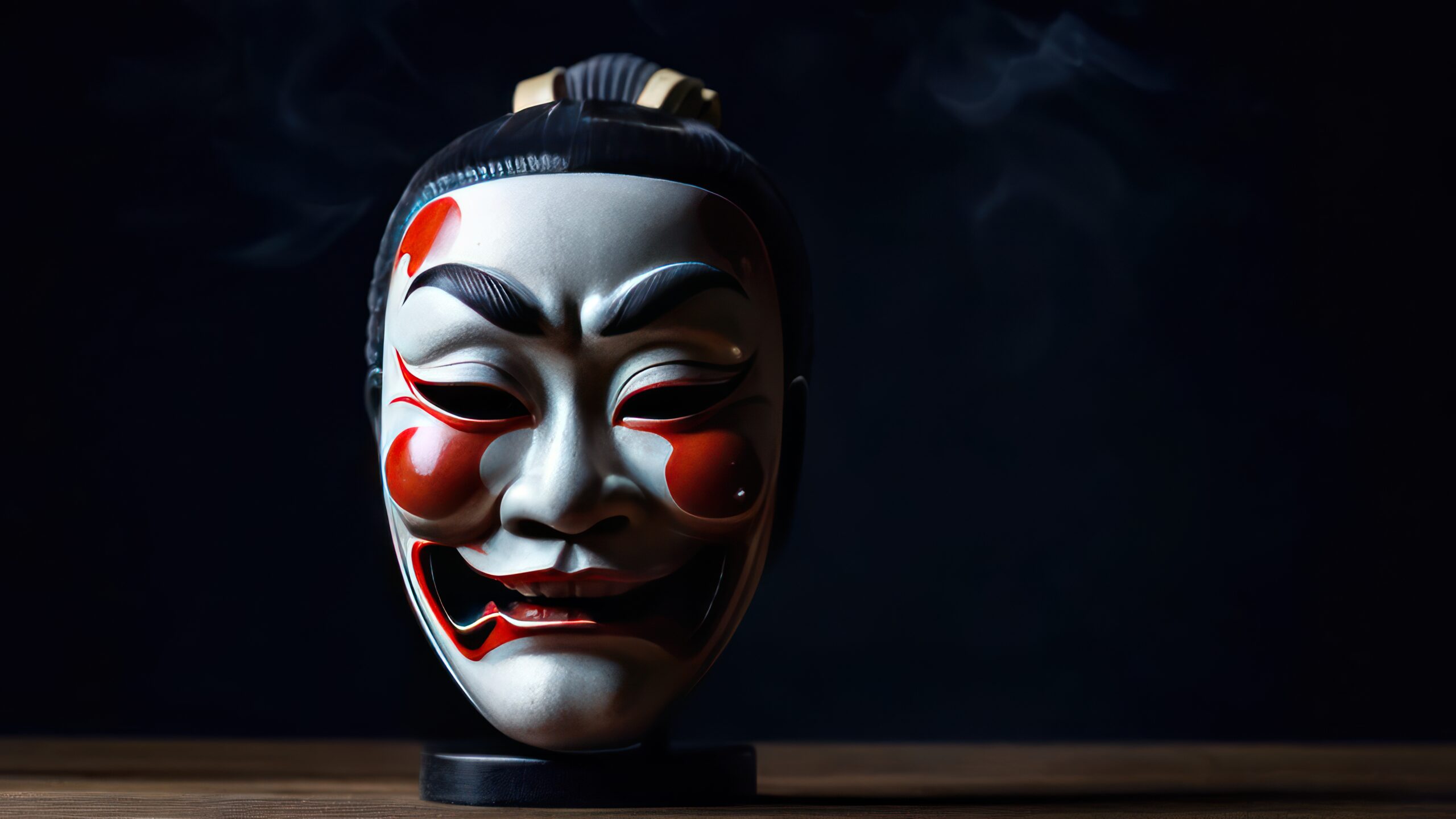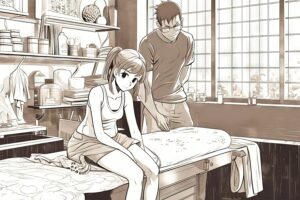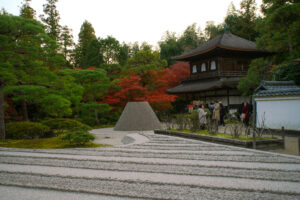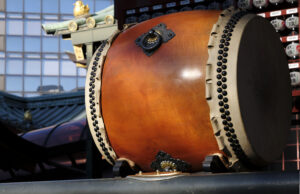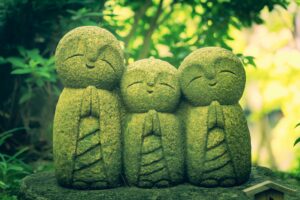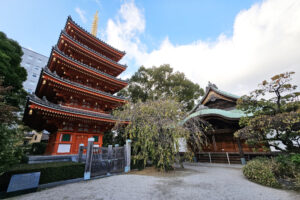Bunraku, the traditional Japanese puppet theater, stands as a testament to the rich cultural heritage of Japan. More than just a performance art, it encapsulates a blend of storytelling, music, and unique craftsmanship that has captured the hearts of audiences for centuries. This article delves into the many facets of Bunraku, exploring its origins, artistry, and contemporary significance while highlighting the challenges it faces in the modern world.
The Origins of Bunraku: A Cultural Historical Overview
Bunraku originated in the early 17th century during Japan’s Edo period, emerging as a popular form of entertainment among the merchant class. Its roots can be traced back to earlier forms of puppet theater, influenced by religious ritual performances and folk traditions. The name "Bunraku" comes from the famous Bunraku-za theater in Osaka, where many performances took place. The genre flourished as it integrated narrative elements from the kabuki theater, drawing on its emotional depth and dramatic storytelling.
In its formative years, Bunraku was not a standalone art form but rather a collaboration between puppeteers, shamisen musicians, and narrators known as "tayu." The interactions between these roles created a rich tapestry of performance that captivated audiences. Bunraku plays often revolved around themes of love, betrayal, and honor, reflecting the complexities of human relationships and societal norms of the time.
The development of Bunraku was also tied to the patronage of the ruling samurai class, who appreciated the aesthetic and philosophical aspects of the performances. This support allowed for the refinement of techniques and the establishment of Bunraku as a respected art form. Over time, it gained recognition as a national treasure, leading to its designation as an Intangible Cultural Heritage by UNESCO in 2003.
Despite the waning popularity of traditional arts in post-war Japan, Bunraku has endured, evolving while maintaining its core elements. The theater’s ability to adapt to contemporary themes while preserving its historical roots has ensured its survival. Understanding Bunraku’s origins gives insight into its current manifestations and the cultural significance it holds in Japan and beyond.
As Bunraku continues to thrive, it serves not only as a window into Japan’s past but as a living art form that reflects ongoing social changes. Today, it stands as a symbol of resilience, embodying both the historical and cultural identity of Japan. The preservation of its historical context is vital to appreciating the depth and complexity of Bunraku as an art form.
The origins of Bunraku are a testament to the artistic and cultural developments of Japan during the Edo period. As we explore the artistry and craftsmanship behind Bunraku puppets, it becomes clear that this is not merely a performance but a sophisticated blend of various artistic disciplines.
The Artistry Behind Bunraku Puppets and Their Craftsmanship
At the heart of Bunraku is the craftsmanship of its puppets, which are intricately designed and crafted to convey a wide range of emotions. These puppets, typically about one-half life-size, are made from wood, cloth, and other materials, reflecting the artisan’s skill and creativity. Each puppet is a work of art, meticulously constructed to ensure fluid movement and vivid expression.
The puppeteers’ artistry extends beyond mere construction; it involves a deep understanding of body language and emotional expression. Each puppet is equipped with a movable head, arms, and sometimes legs, allowing for a dynamic range of motion. The craftsmanship goes from carving faces that can express sorrow, joy, and anger to painting detailed costumes that reflect the character’s social status and personality.
The process of creating a Bunraku puppet is labor-intensive and can take several months to complete. Artisans spend years honing their skills, passing down traditional techniques through generations. This focus on craftsmanship is vital, as it preserves the intricate designs and methods that define Bunraku puppetry.
In addition to the physical attributes of the puppets, the materials used are significant. Different woods are chosen for their weight, texture, and durability. The silk and cotton fabrics used for costumes are dyed and embroidered to create visually striking garments. This attention to detail enhances the visual impact of the performance and allows for a deeper connection between the audience and the characters.
Another essential aspect of the artistry behind Bunraku puppets is their animatronics. The puppeteers’ movements are choreographed to synchronize with the emotions conveyed through the narration. This synergy between puppet and puppeteer creates a seamless performance that captivates audiences, allowing them to immerse themselves in the story.
The artistry of Bunraku puppets is not just about aesthetics; it encompasses a rich tradition of storytelling and emotional expression. As we further explore the role of narration in performances, it becomes evident that this interplay between puppeteers and the story is what truly brings Bunraku to life.
The Role of Narration in Bunraku Performances Today
Narration is a cornerstone of Bunraku performances, providing context, emotion, and depth to the stories being told. The narrator, or tayu, plays a pivotal role in shaping the audience’s experience, using their voice to breathe life into the characters. This unique form of storytelling requires not only vocal skill but also the ability to convey various emotions and nuances through tone and inflection.
Traditionally, the tayu narrates the story while also giving voice to the characters, effectively becoming a part of the performance. This dual role requires an understanding of the characters’ backgrounds, motivations, and relationships, enabling the narrator to create a compelling narrative. The skill of the tayu is crucial; they must balance clarity of narration with the emotional resonance required to engage the audience.
In contemporary Bunraku, the narration has evolved to incorporate modern themes and issues, reflecting the changing landscape of Japanese society. While many performances still draw on classic tales, there is a growing trend to adapt these stories to resonate with younger audiences. This includes integrating contemporary language and themes, making Bunraku more accessible and relevant.
The interaction between the narration and the puppetry is another vital aspect. As the tayu tells the story, the puppeteers work in harmony to animate the characters, creating a dialogue between voice and movement. This synergy is what distinguishes Bunraku from other forms of puppetry; it is a collaborative art form that relies on the interplay of multiple disciplines.
Furthermore, the use of music in conjunction with narration enhances the emotional depth of the performance. Shamisen musicians provide musical accompaniment that underscores the narrative, adding layers of meaning to the unfolding drama. The combination of live narration, music, and puppet manipulation creates a multi-sensory experience that deeply resonates with audiences.
As Bunraku continues to captivate audiences, the role of narration remains integral to its identity. The art of storytelling through voice and movement ensures that each performance is a unique experience, bridging the past with the present and allowing the timeless tales of Bunraku to resonate with future generations.
Master Puppeteers: The Unsung Heroes of Bunraku
Behind the enchanting performances of Bunraku lies the dedication and talent of master puppeteers, who often work in the shadows, veiled by the puppets they control. Their art is a culmination of years of rigorous training, commitment, and deep passion for the craft. Puppeteers undergo a long apprenticeship, often starting as young as ten years old, where they learn not only the techniques of manipulation but also the rich history and tradition of Bunraku.
Master puppeteers are responsible for bringing the puppets to life, using precise movements to evoke emotion and action. Each puppet typically requires three operators: one for the head and right hand, and two for the left hand and legs. This complex arrangement demands exceptional coordination and teamwork, as the puppeteers must synchronize their movements to create a seamless portrayal of the character.
Training involves mastering intricate techniques such as body posture, timing, and the subtleties of emotional expression. Puppeteers must develop a keen sense of how to animate the puppets convincingly, often relying on their own physicality to inform the puppets’ movements. This level of artistry allows them to create a captivating connection with the audience, drawing viewers into the narrative.
Despite their crucial role, master puppeteers often remain unsung heroes of the performance. The tradition of anonymity is a defining feature of Bunraku; the focus is placed on the puppets and the story rather than the individual puppeteers. While this practice enhances the magic of the performance, it also means that the puppeteers’ contributions may go unrecognized by the wider public.
As the art form evolves, there is growing recognition of the importance of highlighting the puppeteers’ skills and artistry. Initiatives that celebrate their contributions and educate audiences about their role are becoming more common, helping to underline the significance of their craft within the larger context of Bunraku.
Ultimately, master puppeteers are the heartbeat of Bunraku. Their dedication and artistry ensure the survival of this ancient art form and its continued relevance in a rapidly changing cultural landscape. As we explore the intricate techniques of manipulating Bunraku puppets, we gain further insight into the artistry required to deliver such profound performances.
The Intricate Techniques of Manipulating Bunraku Puppets
The manipulation of Bunraku puppets is an art form in itself, requiring a blend of physical skill, emotional intelligence, and artistry. Each puppet is operated by highly trained puppeteers who employ a combination of techniques to create lifelike movements. The puppeteers’ training begins at an early age, teaching them the fundamental principles of manipulation, timing, and expression.
The most distinctive feature of Bunraku puppetry is the three-person operation for each puppet. This method enables a more nuanced portrayal of characters, as each puppeteer is responsible for specific movements. The lead puppeteer controls the head and right hand, while the other two puppeteers manage the left hand and legs. This collaborative effort allows for seamless transitions and complex actions that are essential to conveying the emotional depth of the narrative.
Timing is critical in the manipulation of Bunraku puppets. Puppeteers must synchronize their movements not only with each other but also with the narration and the accompanying music. A slight misstep can disrupt the flow of the performance, emphasizing the importance of teamwork and practice. Mastery of timing allows the puppeteers to create moments of tension, joy, or sorrow that resonate with the audience.
Physical posture and body language are equally important in conveying emotions through the puppets. Each movement must be intentional and precise, reflecting the character’s emotional state. For example, a character in despair may be portrayed with drooping shoulders and slow movements, while a character expressing joy might exhibit lively gestures and a more upright posture. This level of detail adds a rich layer of storytelling to the performance.
In addition to physical manipulation, puppeteers must also tap into their emotional intelligence. Understanding the characters’ motivations and feelings is crucial for delivering an authentic performance. This connection facilitates a stronger bond between the puppeteers and the puppets, allowing the audience to engage more deeply with the story.
The intricate techniques of manipulating Bunraku puppets highlight the complexity of this art form. It is a testament to the dedication and artistry of the puppeteers, who transform inanimate objects into expressive characters that resonate with audiences. As we turn our attention to Bunraku in comparison to other puppet theaters, we can see how these unique techniques set it apart.
Bunraku vs. Other Puppet Theaters: A Comparative Study
Bunraku occupies a unique space within the landscape of global puppetry, distinguished by its intricate manipulation techniques, storytelling methods, and cultural significance. While various forms of puppet theater exist worldwide—such as marionette shows in Europe, shadow puppetry in Southeast Asia, and glove puppetry in the Western tradition—Bunraku’s artistry and collaborative nature set it apart.
One of the most notable differences between Bunraku and other forms of puppet theater is the level of complexity in its puppetry. While marionettes are often controlled by strings, Bunraku puppets are operated by a team of three puppeteers. This collaborative approach allows for a higher level of expressiveness and synchronization, enhancing the overall emotional impact of the performance. The depth of character portrayal in Bunraku is often unmatched, as the multiple operators can create nuanced expressions and movements.
The role of narration in Bunraku also differentiates it from other puppet theaters. In Bunraku, the tayu serves as both narrator and character voice, creating a rich auditory experience that complements the visual artistry of the puppets. In contrast, many Western puppet shows rely on dialogue among the puppets themselves, often lacking the depth of emotional storytelling found in Bunraku.
Music plays a significant role in Bunraku, providing an auditory backdrop that enhances the narrative. The shamisen, a traditional Japanese string instrument, accompanies the performance, intertwining melodically with the narration. This integration of music is often less pronounced in other puppet theaters, where sound effects or background music may not be as intricately linked to the storytelling.
Culturally, Bunraku carries a weight of historical significance that may not be as pronounced in other forms of puppetry. It is considered an Intangible Cultural Heritage and is deeply rooted in Japanese history and tradition. Other puppet theaters may not possess the same level of cultural recognition or heritage, making Bunraku a unique national treasure.
While Bunraku has its distinct characteristics, it is essential to recognize the diversity and richness of puppet theaters around the globe. Each form brings a unique perspective and artistry to the craft, contributing to the global tapestry of puppetry. Understanding these differences not only highlights the importance of Bunraku but also fosters appreciation for the various forms of storytelling through puppetry.
As we explore the contemporary adaptations of Bunraku, we can see how this traditional art form continues to evolve while maintaining its core elements, further distinguishing it from other puppetry traditions.
Contemporary Bunraku: Evolution and Modern Adaptations
In recent years, Bunraku has undergone a transformation, adapting to contemporary themes and audiences while remaining rooted in its historical traditions. The evolution of Bunraku reflects broader societal changes, as artists look to infuse modern elements into this ancient art form. This adaptability has allowed Bunraku to remain relevant in today’s cultural landscape.
One significant change has been the exploration of new narratives that resonate with contemporary issues. While classic tales of love and tragedy still form the backbone of Bunraku, there is a growing trend to address current social and political themes. Adaptations of works that reflect modern dilemmas—such as environmental challenges, gender equality, and urbanization—may find their way onto the Bunraku stage, making the performances more relatable to today’s audiences.
Additionally, the incorporation of technology has begun to play a role in modern Bunraku productions. Innovations such as multimedia projections, sound design, and interactive elements can enhance the visual and auditory experience. These technological upgrades provide new layers of storytelling and engagement, attracting younger audiences who may be more accustomed to high-tech forms of entertainment.
While the core techniques of puppetry remain unchanged, some contemporary performances experiment with the format. This includes shorter shows that focus on specific scenes or themes, catering to audiences with limited time or attention spans. Such adaptations are aimed at making Bunraku more accessible and appealing to a broader audience, particularly in urban settings.
Moreover, collaborations between Bunraku artists and creators from other performance arts, such as theater and dance, have emerged. These cross-disciplinary projects allow for creative exchanges and the blending of styles, resulting in innovative performances that challenge traditional boundaries. By reaching out to different forms of artistic expression, Bunraku can attract new followers and engage diverse audiences.
The evolution of contemporary Bunraku illustrates the art form’s resilience and adaptability. By embracing modern themes and techniques while staying true to its roots, Bunraku continues to captivate audiences both in Japan and abroad. As we now explore the integral role of music in Bunraku performances, we can see how this element further enhances the overall experience and emotional depth of the art form.
The Importance of Music in Bunraku Performances
Music serves as a vital component of Bunraku performances, enhancing the narrative and emotional resonance of the storytelling. The shamisen, a traditional Japanese three-stringed instrument, is the primary musical accompaniment during performances. Its sound, characterized by a unique twang and rhythm, complements the narration and puppetry, creating a cohesive auditory landscape.
The role of the shamisen musician is crucial; they not only provide background music but also respond to the emotional tone of the narrative. This interaction between the musician and the tayu allows for a dynamic performance, where the music evolves in response to the unfolding drama. The ability to adapt the musical score in real-time adds a layer of spontaneity and excitement to the performance.
Different musical styles and techniques are employed to convey various emotions. For instance, a somber scene may be accompanied by slow, melancholic melodies, while a joyous moment might feature lively, upbeat rhythms. The music works in tandem with the puppetry to evoke feelings of sadness, happiness, tension, or relief, thereby enhancing the audience’s emotional engagement with the story.
In addition to traditional compositions, contemporary Bunraku performances may incorporate modern musical influences or collaborations with other genres, further enriching the experience. This blending of styles allows artists to explore new sounds and expand the boundaries of traditional Bunraku, making it appealing to younger audiences and diverse audiences.
Moreover, the intricate use of silence also plays a role in Bunraku music. Pauses in music can create dramatic tension, allowing the audience to absorb pivotal moments in the narrative. This thoughtful use of sound and silence highlights the importance of musicality in conveying the emotional depth of the story.
Music in Bunraku is not merely an accompaniment; it is an integral part of the storytelling process. Through the skillful interplay between narration, puppetry, and music, Bunraku creates a mesmerizing experience that resonates with audiences. As we turn to Bunraku festivals, we see how these performances celebrate Japan’s rich puppet heritage and bring communities together.
Bunraku Festivals: Celebrating Japan’s Puppet Heritage
Bunraku festivals are vibrant celebrations of this unique art form, showcasing the talents of puppeteers, musicians, and narrators while fostering a sense of community and cultural pride. These festivals are often held in conjunction with local cultural events or as part of national celebrations, drawing both local residents and tourists eager to experience the enchanting world of Bunraku.
One of the most prominent festivals is the Osaka Bunraku Festival, which takes place annually and features a wide range of performances. This event highlights traditional Bunraku plays, contemporary adaptations, and collaborative works that blend Bunraku with other forms of theater and performance art. The festival not only provides a platform for established artists but also serves as a showcase for emerging talents, ensuring the continuity of the art form.
During these festivals, workshops and demonstrations are often organized to engage the audience and provide insights into the technical aspects of puppetry. Attendees can witness firsthand the intricate craftsmanship involved in creating Bunraku puppets and the rigorous training required to become a puppeteer. Such educational initiatives are vital in fostering appreciation for the art form and encouraging future generations to get involved.
The atmosphere of Bunraku festivals is typically festive and inclusive, creating a sense of camaraderie among attendees. The celebration of this ancient art form allows communities to come together, sharing in the experience of storytelling and cultural expression. Various stalls and booths may feature handicrafts, traditional foods, and merchandise related to Bunraku, further enriching the festival atmosphere.
In addition to promoting local talent, Bunraku festivals also serve as a means of cultural exchange. International guest artists may be invited to perform or collaborate, introducing global audiences to the beauty of Bunraku while exposing Japanese audiences to different artistic perspectives. This exchange fosters a spirit of collaboration and innovation that is essential for the evolution of the art form.
Bunraku
